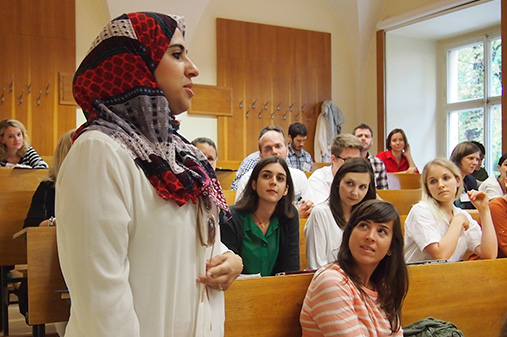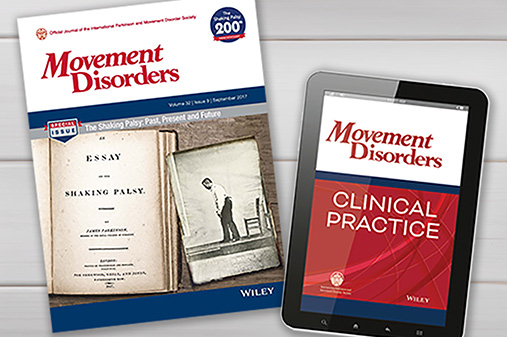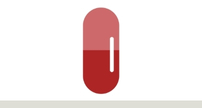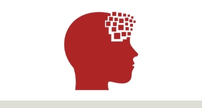
Course Listing
Advance your knowledge in engaging, interactive courses developed and taught by leaders in the field.
Browse All MDS Courses
New courses are added regularly. If there are not courses listed in the category you are searching, more will be scheduled at a later date. Check back soon or sign up for email notifications.
Fundamentals: Approach to Ataxias
On Demand
Fundamentals
15 Minutes
Foundational / Beginner
859 <p>This module will provide an approach to ataxia, including the definition, phenomenology and underlying anatomical basis of ataxia. An approach to diagnosis of ataxia including discussion of common acquired and genetic ataxias will be included. Treatment of ataxia with mention of treatable causes of ataxia will also be covered. </p> Bart P.C. van de Warrenburg, MD, PhD 15 0.25 2024-08-30 https://education.movementdisorders.org/Detail/859/Fundamentals:-Approach-to-Ataxias- https://education.movementdisorders.org/Upload/ActivityImages/Ataxia-Fundamentals250265.jpg 2024-08-30T00:00:00 2027-08-30T00:00:00 <p><strong>ACCREDITATION STATEMENT</strong></p><p>This activity has been planned and implemented in accordance with the accreditation requirements and policies of the Accreditation Council for Continuing Medical Education (ACCME). The International Parkinson and Movement Disorder Society is accredited by the ACCME to provide continuing medical education for physicians.</p><p><br></p><p><strong>CREDIT DESIGNATION STATEMENT</strong></p><p>The International Parkinson and Movement Disorder Society designates this activity for a maximum of 0.25 <em>AMA PRA Category 1 Credits™</em>. Physicians should only claim credit commensurate with the extent of their participation.</p><p><br></p><p><strong>FACULTY DISCLOSURE</strong></p><p>All individuals in control of content for this activity are required to disclose all financial relationships with ineligible companies (as defined by the ACCME) over the last 24 months. Disclosure information is available below. All relevant financial relationships have been mitigated in advance of the release of this module.</p><p><br></p><table border="0" cellpadding="0" cellspacing="0" width="672"><tbody><tr height="19"><td height="19" style="background-color: rgb(209, 213, 216);" width="119"><strong>First Name</strong></td><td style="background-color: rgb(209, 213, 216);" width="119"><strong>Last Name</strong></td><td style="background-color: rgb(209, 213, 216);" width="119"><strong>Role in Activity</strong></td><td style="background-color: rgb(209, 213, 216);" width="315"><strong>Disclosure(s)</strong></td></tr><tr height="77"><td height="77">Bart</td><td>van de Warrenburg</td><td>Author</td><td width="315">Consultant: Servier; Biohave Pharmaceuticals; Vico Therapeutics<br>Intends to reference off-label/unapproved uses of drugs or devices in presentation.</td></tr><tr height="19"><td height="19">Renato</td><td>Munhoz</td><td>Author</td><td>Nothing to Disclose</td></tr><tr height="19"><td height="19">Camila</td><td>Aquino</td><td>Planner</td><td width="315">Nothing to Disclose</td></tr><tr height="19"><td height="19">Vikram</td><td>Holla</td><td>Planner</td><td>Nothing to Disclose</td></tr><tr height="19"><td height="19">Katherine</td><td>Fu</td><td>Reviewer</td><td>Nothing to Disclose</td></tr></tbody></table><p><br></p><p><strong>SATISFACTORY COMPLETION</strong></p><p>Participants must complete an evaluation for each session they attend to receive continuing medical education credit. Your chosen session(s) must be attended in their entirety. Partial credit for individual sessions is not available.</p><p><br></p><p><strong>METHOD OF PARTICIPATION </strong></p><p>Your chosen sessions must be attended in their entirety. Partial credit of individual sessions is not available. If you are seeking continuing education credit for a specialty not listed in the Accreditation Statement, it is your responsibility to contact your licensing/certification board to determine course eligibility for your board requirement.</p><p><br></p><p><strong>CONTENT VALIDITY STATEMENT</strong></p><p>All recommendations involving clinical medicine in MDS activities are based on evidence that is accepted within the profession of medicine as adequate justification for their indications and contraindications in the case of patients. All scientific research referred to, reported or used in CME in support or justification of a patient care recommendations conforms to the generally accepted standards of experimental design, data collection and analysis. Activities that promote recommendations, treatment or manners of practicing medicine not within the definition of CME or are knowing to have risks or dangers that outweigh the benefits or are knowing to be ineffective in the treatment of patients do not constitute valid CME.</p> MDS Education <p><span style="background-color: null;"><strong>FACULTY</strong></span></p><p>Lecturer: Bart P.C. van de Warrenburg, MD, PhD - Radboud University Medical Centre, Nijmegen, Netherlands</p><p>Contributor: Renato Munhoz, MD - University of Toronto, Toronto, Canada</p><p><br></p><p><strong>LEARNING OBJECTIVES</strong></p><p>Upon completion of this activity, learners will be able to: </p><p>1. Understand the definition and phenomenology of ataxia </p><p>2. Identify the most common acquired and genetic causes of ataxia and an approach to diagnosis. </p><p>3. Understand the treatment of ataxia including identification of treatable causes of ataxia.</p><p><br></p><p><strong>ABOUT THE FUNDAMENTAL SERIES</strong></p><p>The Series, comprised of 17 self-guided e-learning modules, provides an overview of clinical approaches, evaluation and management of common movement disorders.<strong> </strong></p><p><br></p><p><strong>INTENDED AUDIENCE</strong></p><p>Neurology residents, primary care providers, medical students, internists and other non-neurology specialists, allied health, and industry who have limited to no movement disorder experience.</p> <p>1. Active Internet connection (DSL or Cable). Dial-up connection will have constant buffering problem.</p><p>2. Compatible with Windows PC and MAC (256 MB of RAM or higher).</p><p>3. Activity is best viewed on Internet Explorer 9.0 or higher, Safari 5.0 or higher and Firefox 29.0 or higher.</p><p>4. Adobe Flash Player 12.0 (or higher).</p><p>5. Adobe Reader to print certificate.</p> 0 /Courses/Fundamentals-Approach-to-Ataxias.htm Fundamentals: Approach to Ataxias 2024-08-30T12:01:07.940 0 0 Foundational / Beginner Clinician Fellow Industry Resident Student Fundamentals CME On-Demand English USA
Fundamentals: Approach to Chorea
On Demand
Fundamentals
30 Minutes
Foundational / Beginner
860 <p>This module will provide an approach to chorea, exploring the definition, pathophysiology, and differential diagnosis of chorea. It will also provide a practical and evidence-based approach to the treatment of the most common causes of chorea. </p> Francisco Cardoso, MD, PhD, FAAN 30 0.50 2024-08-30 https://education.movementdisorders.org/Detail/860/Fundamentals:-Approach-to-Chorea https://education.movementdisorders.org/Upload/ActivityImages/Chorea-Fundamentals413637.jpg 2024-08-30T00:00:00 2027-08-30T00:00:00 <p><strong>ACCREDITATION STATEMENT</strong></p><p>This activity has been planned and implemented in accordance with the accreditation requirements and policies of the Accreditation Council for Continuing Medical Education (ACCME). The International Parkinson and Movement Disorder Society is accredited by the ACCME to provide continuing medical education for physicians.</p><p><br></p><p><strong>CREDIT DESIGNATION STATEMENT</strong></p><p>The International Parkinson and Movement Disorder Society designates this activity for a maximum of 0.5 <em>AMA PRA Category 1 Credits™</em>. Physicians should only claim credit commensurate with the extent of their participation.</p><p><br></p><p><strong>FACULTY DISCLOSURE</strong></p><p>All individuals in control of content for this activity are required to disclose all financial relationships with ineligible companies (as defined by the ACCME) over the last 24 months. Disclosure information is available below. All relevant financial relationships have been mitigated in advance of the release of this module.</p><p><br></p><table border="0" cellpadding="0" cellspacing="0" width="672"><tbody><tr height="19"><td height="19" style="background-color: rgb(209, 213, 216);" width="119"><strong>First Name</strong></td><td style="background-color: rgb(209, 213, 216);" width="119"><strong>Last Name</strong></td><td style="background-color: rgb(209, 213, 216);" width="119"><strong>Role in Activity</strong></td><td style="background-color: rgb(209, 213, 216);" width="315"><strong>Disclosure(s)</strong></td></tr><tr height="21"><td height="21">Francisco</td><td>Cardoso</td><td>Author</td><td>Nothing to Disclose</td></tr><tr height="19"><td height="19">Iva</td><td>Stankovic</td><td>Author</td><td>Nothing to Disclose</td></tr><tr height="19"><td height="19">Camila</td><td>Aquino</td><td>Planner</td><td width="315">Nothing to Disclose</td></tr><tr height="19"><td height="19">Vikram</td><td>Holla</td><td>Planner</td><td>Nothing to Disclose</td></tr><tr height="19"><td height="19">Ravi</td><td>Yadav</td><td>Reviewer</td><td>Nothing to Disclose</td></tr></tbody></table><p><br></p><p><strong>SATISFACTORY COMPLETION</strong></p><p>Participants must complete an evaluation for each session they attend to receive continuing medical education credit. Your chosen session(s) must be attended in their entirety. Partial credit for individual sessions is not available.</p><p><br></p><p><strong>METHOD OF PARTICIPATION </strong></p><p>Your chosen sessions must be attended in their entirety. Partial credit of individual sessions is not available. If you are seeking continuing education credit for a specialty not listed in the Accreditation Statement, it is your responsibility to contact your licensing/certification board to determine course eligibility for your board requirement.</p><p><br></p><p><strong>CONTENT VALIDITY STATEMENT</strong></p><p>All recommendations involving clinical medicine in MDS activities are based on evidence that is accepted within the profession of medicine as adequate justification for their indications and contraindications in the case of patients. All scientific research referred to, reported or used in CME in support or justification of a patient care recommendations conforms to the generally accepted standards of experimental design, data collection and analysis. Activities that promote recommendations, treatment or manners of practicing medicine not within the definition of CME or are knowing to have risks or dangers that outweigh the benefits or are knowing to be ineffective in the treatment of patients do not constitute valid CME.</p> MDS Education <p><span style="background-color: null;"><strong>FACULTY</strong></span></p><p>Lecturer: Francisco Cardoso, MD, PhD, FAAN - The Federal University of Minas Gerais, Belo Horizonte, Brazil</p><p>Contributor: Iva Stankovic, MD, PhD - Neurology Clinic, Clinical Center of Serbia, Belgrade, Serbia</p><p><br></p><p><strong>LEARNING OBJECTIVES</strong></p><p>Upon completion of this activity, learners will be able to: </p><p>1. Understand the phenomenology of chorea </p><p>2. Identify the most common acquired and genetic causes of chorea.</p><p>3. Review the treatment of the most common causes of chorea.</p><p><br></p><p><strong>ABOUT THE FUNDAMENTAL SERIES</strong></p><p>The Series, comprised of 17 self-guided e-learning modules, provides an overview of clinical approaches, evaluation and management of common movement disorders.<strong> </strong></p><p><br></p><p><strong>INTENDED AUDIENCE</strong></p><p>Neurology residents, primary care providers, medical students, internists and other non-neurology specialists, allied health, and industry who have limited to no movement disorder experience.</p> <p>1. Active Internet connection (DSL or Cable). Dial-up connection will have constant buffering problem.</p><p>2. Compatible with Windows PC and MAC (256 MB of RAM or higher).</p><p>3. Activity is best viewed on Internet Explorer 9.0 or higher, Safari 5.0 or higher and Firefox 29.0 or higher.</p><p>4. Adobe Flash Player 12.0 (or higher).</p><p>5. Adobe Reader to print certificate.</p> 0 /Courses/Fundamentals-Approach-to-Chorea.htm Fundamentals: Approach to Chorea 2024-08-30T12:01:08.673 0 0 Foundational / Beginner Clinician Fellow Industry Resident Student Fundamentals CME On-Demand English USA
Fundamentals: Approach to Dystonia
On Demand
Fundamentals
30 Minutes
Foundational / Beginner
861 <p>This module will discuss the definition, clinical characteristics, secondary causes,and common therapeutic approaches. Information on treatable dystonic disorders like Dopa Responsive Dystonia, Wilson’s Disease and Tardive Dystonia will be provided.</p> Sarah Camargos, MD 30 0.50 2024-08-30 https://education.movementdisorders.org/Detail/861/Fundamentals:-Approach-to-Dystonia https://education.movementdisorders.org/Upload/ActivityImages/Dystonia-Fundamentals844598.jpg 2024-08-30T00:00:00 2027-08-30T00:00:00 <p><strong>ACCREDITATION STATEMENT</strong></p><p>This activity has been planned and implemented in accordance with the accreditation requirements and policies of the Accreditation Council for Continuing Medical Education (ACCME). The International Parkinson and Movement Disorder Society is accredited by the ACCME to provide continuing medical education for physicians.</p><p><br></p><p><strong>CREDIT DESIGNATION STATEMENT</strong></p><p>The International Parkinson and Movement Disorder Society designates this activity for a maximum of 0.5 <em>AMA PRA Category 1 Credits™</em>. Physicians should only claim credit commensurate with the extent of their participation.</p><p><br></p><p><strong>FACULTY DISCLOSURE</strong></p><p>All individuals in control of content for this activity are required to disclose all financial relationships with ineligible companies (as defined by the ACCME) over the last 24 months. Disclosure information is available below. All relevant financial relationships have been mitigated in advance of the release of this module.</p><p><br></p><table border="0" cellpadding="0" cellspacing="0" width="672"><tbody><tr height="19"><td height="19" style="background-color: rgb(209, 213, 216);" width="119"><strong>First Name</strong></td><td style="background-color: rgb(209, 213, 216);" width="119"><strong>Last Name</strong></td><td style="background-color: rgb(209, 213, 216);" width="119"><strong>Role in Activity</strong></td><td style="background-color: rgb(209, 213, 216);" width="315"><strong>Disclosure(s)</strong></td></tr><tr height="21"><td height="21">Sarah</td><td>Camargos</td><td>Author</td><td>Nothing to Disclose</td></tr><tr height="19"><td height="19">Michael</td><td>Zech</td><td>Author</td><td>Nothing to Disclose</td></tr><tr height="19"><td height="19">Camila</td><td>Aquino</td><td>Planner</td><td width="315">Nothing to Disclose</td></tr><tr height="19"><td height="19">Vikram</td><td>Holla</td><td>Planner</td><td>Nothing to Disclose</td></tr><tr height="19"><td height="19">Divya</td><td>KP</td><td>Reviewer</td><td>Nothing to Disclose</td></tr></tbody></table><p><br></p><p><strong>SATISFACTORY COMPLETION</strong></p><p>Participants must complete an evaluation for each session they attend to receive continuing medical education credit. Your chosen session(s) must be attended in their entirety. Partial credit for individual sessions is not available.</p><p><br></p><p><strong>METHOD OF PARTICIPATION </strong></p><p>Your chosen sessions must be attended in their entirety. Partial credit of individual sessions is not available. If you are seeking continuing education credit for a specialty not listed in the Accreditation Statement, it is your responsibility to contact your licensing/certification board to determine course eligibility for your board requirement.</p><p><br></p><p><strong>CONTENT VALIDITY STATEMENT</strong></p><p>All recommendations involving clinical medicine in MDS activities are based on evidence that is accepted within the profession of medicine as adequate justification for their indications and contraindications in the case of patients. All scientific research referred to, reported or used in CME in support or justification of a patient care recommendations conforms to the generally accepted standards of experimental design, data collection and analysis. Activities that promote recommendations, treatment or manners of practicing medicine not within the definition of CME or are knowing to have risks or dangers that outweigh the benefits or are knowing to be ineffective in the treatment of patients do not constitute valid CME.</p> MDS Education <p><span style="background-color: null;"><strong>FACULTY</strong></span></p><p>Lecturer: Sarah Camargos, MD - Federal University of Minas Gerais, Belo Horizonte, Brazil</p><p>Contributor: Michael Zech, MD - Institute of Neurogenomics, Munich, Germany </p><p><br></p><p><strong>LEARNING OBJECTIVES</strong></p><p>Upon completion of this activity, learners will be able to: </p><p>1. Define Dystonia and identify the clinical characteristics.</p><p>2. Review diagnostic tips for genetic dystonia</p><p>3. Outline secondary causes of Dystonia.</p><p>4. Elaborate on young onset dystonias and treatable dystonic disorders.</p><p>5. Review Treatment approach to dystonias</p><p><br></p><p><strong>ABOUT THE FUNDAMENTAL SERIES</strong></p><p>The Series, comprised of 17 self-guided e-learning modules, provides an overview of clinical approaches, evaluation and management of common movement disorders.<strong> </strong></p><p><br></p><p><strong>INTENDED AUDIENCE</strong></p><p>Neurology residents, primary care providers, medical students, internists and other non-neurology specialists, allied health, and industry who have limited to no movement disorder experience.</p> <p>1. Active Internet connection (DSL or Cable). Dial-up connection will have constant buffering problem.</p><p>2. Compatible with Windows PC and MAC (256 MB of RAM or higher).</p><p>3. Activity is best viewed on Internet Explorer 9.0 or higher, Safari 5.0 or higher and Firefox 29.0 or higher.</p><p>4. Adobe Flash Player 12.0 (or higher).</p><p>5. Adobe Reader to print certificate.</p> 0 /Courses/Fundamentals-Approach-to-Dystonia.htm Fundamentals: Approach to Dystonia 2024-08-30T12:01:09.580 0 0 Foundational / Beginner Clinician Fellow Industry Resident Student Fundamentals CME On-Demand English USA
Fundamentals: Approach to Myoclonus
On Demand
Fundamentals
15 Minutes
Foundational / Beginner
863 <p>This module will discuss the definition, classification (anatomic/clinical), and electrophysiology of myoclonus. Genetics of myoclonus, including the new nomenclature by the Movement Disorder Society Task Force, practical approach (history, examination, investigations), management) and drug-induced myoclonus to be also discussed.</p> Mark Hallet, MD 15 0.25 2024-08-30 https://education.movementdisorders.org/Detail/863/Fundamentals:-Approach-to-Myoclonus https://education.movementdisorders.org/Upload/ActivityImages/Myoclonus-Fundamentals791900.jpg 2024-08-30T00:00:00 2027-08-30T00:00:00 <p><strong>ACCREDITATION STATEMENT</strong></p><p>This activity has been planned and implemented in accordance with the accreditation requirements and policies of the Accreditation Council for Continuing Medical Education (ACCME). The International Parkinson and Movement Disorder Society is accredited by the ACCME to provide continuing medical education for physicians.</p><p><br></p><p><strong>CREDIT DESIGNATION STATEMENT</strong></p><p>The International Parkinson and Movement Disorder Society designates this activity for a maximum of 0.25 <em>AMA PRA Category 1 Credits™</em>. Physicians should only claim credit commensurate with the extent of their participation.</p><p><br></p><p><strong>FACULTY DISCLOSURE</strong></p><p>All individuals in control of content for this activity are required to disclose all financial relationships with ineligible companies (as defined by the ACCME) over the last 24 months. Disclosure information is available below. All relevant financial relationships have been mitigated in advance of the release of this module.</p><p><br></p><table border="0" cellpadding="0" cellspacing="0" width="672"><tbody><tr height="19"><td height="19" style="background-color: rgb(209, 213, 216);" width="119"><strong>First Name</strong></td><td style="background-color: rgb(209, 213, 216);" width="119"><strong>Last Name</strong></td><td style="background-color: rgb(209, 213, 216);" width="119"><strong>Role in Activity</strong></td><td style="background-color: rgb(209, 213, 216);" width="315"><strong>Disclosure(s)</strong></td></tr><tr height="97"><td height="97">Mark</td><td>Hallett</td><td>Author</td><td width="315">Consultant: Brainsway; QuantalX; VoxNeuro; Janssen<br>Royalties: Brainsway<br>Intends to reference off-label/unapproved uses of drugs or devices in presentation.</td></tr><tr height="19"><td height="19">Anna</td><td>Latorre</td><td>Author</td><td>Nothing to Disclose</td></tr><tr height="19"><td height="19">Camila</td><td>Aquino</td><td>Planner</td><td width="315">Nothing to Disclose</td></tr><tr height="19"><td height="19">Vikram</td><td>Holla</td><td>Planner</td><td>Nothing to Disclose</td></tr><tr height="21"><td height="21">Ravi</td><td>Yadav</td><td>Reviewer</td><td>Nothing to Disclose</td></tr></tbody></table><p><br></p><p><strong>SATISFACTORY COMPLETION</strong></p><p>Participants must complete an evaluation for each session they attend to receive continuing medical education credit. Your chosen session(s) must be attended in their entirety. Partial credit for individual sessions is not available.</p><p><br></p><p><strong>METHOD OF PARTICIPATION </strong></p><p>Your chosen sessions must be attended in their entirety. Partial credit of individual sessions is not available. If you are seeking continuing education credit for a specialty not listed in the Accreditation Statement, it is your responsibility to contact your licensing/certification board to determine course eligibility for your board requirement.</p><p><br></p><p><strong>CONTENT VALIDITY STATEMENT</strong></p><p>All recommendations involving clinical medicine in MDS activities are based on evidence that is accepted within the profession of medicine as adequate justification for their indications and contraindications in the case of patients. All scientific research referred to, reported or used in CME in support or justification of a patient care recommendations conforms to the generally accepted standards of experimental design, data collection and analysis. Activities that promote recommendations, treatment or manners of practicing medicine not within the definition of CME or are knowing to have risks or dangers that outweigh the benefits or are knowing to be ineffective in the treatment of patients do not constitute valid CME.</p> MDS Education <p><span style="background-color: null;"><strong>FACULTY</strong></span></p><p>Lecturer: Mark Hallet, MD - NINDS, Bethesda, United States</p><p>Contributor: Anna Latorre, MD, PhD - UCL Institute of Neurology, London, United Kingdom</p><p><br></p><p><strong>LEARNING OBJECTIVES</strong></p><p>Upon completion of this activity, learners will be able to: </p><p>1. Identify the clinical characteristics of different types of myoclonus.</p><p>2. Examine the genetic causes of myoclonus.</p><p>3. Outline a practical approach to diagnosis including electrophysiology.</p><p>4. Discuss practical approach to treatment.</p><p><br></p><p><strong>ABOUT THE FUNDAMENTAL SERIES</strong></p><p>The Series, comprised of 17 self-guided e-learning modules, provides an overview of clinical approaches, evaluation and management of common movement disorders.<strong> </strong></p><p><br></p><p><strong>INTENDED AUDIENCE</strong></p><p>Neurology residents, primary care providers, medical students, internists and other non-neurology specialists, allied health, and industry who have limited to no movement disorder experience.</p> <p>1. Active Internet connection (DSL or Cable). Dial-up connection will have constant buffering problem.</p><p>2. Compatible with Windows PC and MAC (256 MB of RAM or higher).</p><p>3. Activity is best viewed on Internet Explorer 9.0 or higher, Safari 5.0 or higher and Firefox 29.0 or higher.</p><p>4. Adobe Flash Player 12.0 (or higher).</p><p>5. Adobe Reader to print certificate.</p> 0 /Courses/Fundamentals-Approach-to-Myoclonus.htm Fundamentals: Approach to Myoclonus 2024-08-30T12:01:11.503 0 0 Foundational / Beginner Clinician Fellow Industry Resident Student Fundamentals CME On-Demand English USA
Fundamentals: Approach to Parkinsonism
On Demand
Fundamentals
30 Minutes
Foundational / Beginner
858 <p>This module will serve as a practical guide to the diagnosis of Parkinson’s disease, atypical Parkinsonism, including but not limited to Multiple System Atrophy and Progressive.</p> Kelvin Chou, MD 30 0.50 2024-08-30 https://education.movementdisorders.org/Detail/858/Fundamentals:-Approach-to-Parkinsonism https://education.movementdisorders.org/Upload/ActivityImages/Parkinsonism-Fundamentals627659.jpg 2024-08-30T00:00:00 2027-08-30T00:00:00 <p><strong>ACCREDITATION STATEMENT</strong></p><p>This activity has been planned and implemented in accordance with the accreditation requirements and policies of the Accreditation Council for Continuing Medical Education (ACCME). The International Parkinson and Movement Disorder Society is accredited by the ACCME to provide continuing medical education for physicians.</p><p><br></p><p><strong>CREDIT DESIGNATION STATEMENT</strong></p><p>The International Parkinson and Movement Disorder Society designates this activity for a maximum of 0.5 <em>AMA PRA Category 1 Credits™</em>. Physicians should only claim credit commensurate with the extent of their participation.</p><p><br></p><p><strong>FACULTY DISCLOSURE</strong></p><p>All individuals in control of content for this activity are required to disclose all financial relationships with ineligible companies (as defined by the ACCME) over the last 24 months. Disclosure information is available below. All relevant financial relationships have been mitigated in advance of the release of this module.</p><p><br></p><table border="0" cellpadding="0" cellspacing="0" width="672"><tbody><tr height="19"><td height="19" style="background-color: rgb(209, 213, 216);" width="119"><strong>First Name</strong></td><td style="background-color: rgb(209, 213, 216);" width="119"><strong>Last Name</strong></td><td style="background-color: rgb(209, 213, 216);" width="119"><strong>Role in Activity</strong></td><td style="background-color: rgb(209, 213, 216);" width="315"><strong>Disclosure(s)</strong></td></tr><tr height="39"><td height="39">Kelvin</td><td>Chou</td><td>Author</td><td width="315">Consultant: Abbott; Neurocrine<br>Grant: Neuraly</td></tr><tr height="19"><td height="19">Camila</td><td>Aquino</td><td>Author, Planner</td><td width="315">Nothing to Disclose</td></tr><tr height="19"><td height="19">Vikram</td><td>Holla</td><td>Planner</td><td>Nothing to Disclose</td></tr><tr height="21"><td height="21">Divya</td><td>KP</td><td>Reviewer</td><td width="315">Nothing to Disclose</td></tr></tbody></table><p><br></p><p><strong>SATISFACTORY COMPLETION</strong></p><p>Participants must complete an evaluation for each session they attend to receive continuing medical education credit. Your chosen session(s) must be attended in their entirety. Partial credit for individual sessions is not available.</p><p><br></p><p><strong>METHOD OF PARTICIPATION </strong></p><p>Your chosen sessions must be attended in their entirety. Partial credit of individual sessions is not available. If you are seeking continuing education credit for a specialty not listed in the Accreditation Statement, it is your responsibility to contact your licensing/certification board to determine course eligibility for your board requirement.</p><p><br></p><p><strong>CONTENT VALIDITY STATEMENT</strong></p><p>All recommendations involving clinical medicine in MDS activities are based on evidence that is accepted within the profession of medicine as adequate justification for their indications and contraindications in the case of patients. All scientific research referred to, reported or used in CME in support or justification of a patient care recommendations conforms to the generally accepted standards of experimental design, data collection and analysis. Activities that promote recommendations, treatment or manners of practicing medicine not within the definition of CME or are knowing to have risks or dangers that outweigh the benefits or are knowing to be ineffective in the treatment of patients do not constitute valid CME.</p> MDS Education <p><span style="background-color: null;"><strong>FACULTY</strong></span></p><p>Lecturer: Kelvin Chou, MD - Toronto Western Hospital, Ann Arbor, United States</p><p>Contributor: Camila Aquino, MD, MSc, PhD - University of Calgary, Calgary, Canada</p><p><br></p><p><strong>LEARNING OBJECTIVES</strong></p><p>Upon completion of this activity, learners will be able to: </p><p>1. Recognize clinical signs and symptoms of Parkinson’s disease and be able to differentiate Parkinson’s disease from other types of parkinsonism including atypical, drug-induced, and functional presentations.</p><p>2. Outline diagnostic approach including neuroimaging.</p><p>3. Identify available pharmacological and non-pharmacological treatment approaches for different types of parkinsonism and their application.</p><p><br></p><p><strong>ABOUT THE FUNDAMENTAL SERIES</strong></p><p>The Series, comprised of 17 self-guided e-learning modules, provides an overview of clinical approaches, evaluation and management of common movement disorders.<strong> </strong></p><p><br></p><p><strong>INTENDED AUDIENCE</strong></p><p>Neurology residents, primary care providers, medical students, internists and other non-neurology specialists, allied health, and industry who have limited to no movement disorder experience.</p> <p>1. Active Internet connection (DSL or Cable). Dial-up connection will have constant buffering problem.</p><p>2. Compatible with Windows PC and MAC (256 MB of RAM or higher).</p><p>3. Activity is best viewed on Internet Explorer 9.0 or higher, Safari 5.0 or higher and Firefox 29.0 or higher.</p><p>4. Adobe Flash Player 12.0 (or higher).</p><p>5. Adobe Reader to print certificate.</p> 0 /Courses/Fundamentals-Approach-to-Parkinsonism.htm Fundamentals: Approach to Parkinsonism 2024-08-30T12:01:07.143 0 0 Foundational / Beginner Clinician Fellow Industry Resident Student Fundamentals CME On-Demand English USA
Fundamentals: Approach to Tics and Tic-like Disorders
On Demand
Fundamentals
15 Minutes
Foundational / Beginner
866 <p>This module aims to provide a brief overview of what tics are, underlying pathophysiology, different causes and forms of tics and its management.</p> Tamara Pringsheim, MD 15 0.25 2024-08-30 https://education.movementdisorders.org/Detail/866/Fundamentals:-Approach-to-Tics-and-Tic-like-Disorders https://education.movementdisorders.org/Upload/ActivityImages/tics-Fundamentals876923.jpg 2024-08-30T00:00:00 2027-08-30T00:00:00 <p><strong>ACCREDITATION STATEMENT</strong></p><p>This activity has been planned and implemented in accordance with the accreditation requirements and policies of the Accreditation Council for Continuing Medical Education (ACCME). The International Parkinson and Movement Disorder Society is accredited by the ACCME to provide continuing medical education for physicians.</p><p><br></p><p><strong>CREDIT DESIGNATION STATEMENT</strong></p><p>The International Parkinson and Movement Disorder Society designates this activity for a maximum of 0.25 <em>AMA PRA Category 1 Credits™</em>. Physicians should only claim credit commensurate with the extent of their participation.</p><p><br></p><p><strong>FACULTY DISCLOSURE</strong></p><p>All individuals in control of content for this activity are required to disclose all financial relationships with ineligible companies (as defined by the ACCME) over the last 24 months. Disclosure information is available below. All relevant financial relationships have been mitigated in advance of the release of this module.</p><p><br></p><table border="0" cellpadding="0" cellspacing="0" width="672"><tbody><tr height="19"><td height="19" style="background-color: rgb(209, 213, 216);" width="119"><strong>First Name</strong></td><td style="background-color: rgb(209, 213, 216);" width="119"><strong>Last Name</strong></td><td style="background-color: rgb(209, 213, 216);" width="119"><strong>Role in Activity</strong></td><td style="background-color: rgb(209, 213, 216);" width="315"><strong>Disclosure(s)</strong></td></tr><tr height="21"><td height="21">Tamara</td><td>Pringsheim</td><td>Author</td><td>Nothing to Disclose</td></tr><tr height="19"><td height="19">Christelle</td><td>Nilles</td><td>Author</td><td>Nothing to Disclose</td></tr><tr height="19"><td height="19">Camila</td><td>Aquino</td><td>Planner</td><td width="315">Nothing to Disclose</td></tr><tr height="19"><td height="19">Vikram</td><td>Holla</td><td>Planner</td><td>Nothing to Disclose</td></tr><tr height="21"><td height="21">Amie</td><td>Hiller</td><td>Reviewer</td><td width="315">Nothing to Disclose</td></tr></tbody></table><p><br></p><p><strong>SATISFACTORY COMPLETION</strong></p><p>Participants must complete an evaluation for each session they attend to receive continuing medical education credit. Your chosen session(s) must be attended in their entirety. Partial credit for individual sessions is not available.</p><p><br></p><p><strong>METHOD OF PARTICIPATION </strong></p><p>Your chosen sessions must be attended in their entirety. Partial credit of individual sessions is not available. If you are seeking continuing education credit for a specialty not listed in the Accreditation Statement, it is your responsibility to contact your licensing/certification board to determine course eligibility for your board requirement.</p><p><br></p><p><strong>CONTENT VALIDITY STATEMENT</strong></p><p>All recommendations involving clinical medicine in MDS activities are based on evidence that is accepted within the profession of medicine as adequate justification for their indications and contraindications in the case of patients. All scientific research referred to, reported or used in CME in support or justification of a patient care recommendations conforms to the generally accepted standards of experimental design, data collection and analysis. Activities that promote recommendations, treatment or manners of practicing medicine not within the definition of CME or are knowing to have risks or dangers that outweigh the benefits or are knowing to be ineffective in the treatment of patients do not constitute valid CME.</p> MDS Education <p><span style="background-color: null;"><strong>FACULTY</strong></span></p><p>Lecturer: Tamara Pringsheim, MD - University of Calgary, Calgary, Canada</p><p>Contributor: Christelle Nille - Hôpital Fondation Rothschild, Paris, France </p><p><br></p><p><strong>LEARNING OBJECTIVES</strong></p><p>Upon completion of this activity, learners will be able to: </p><p>1. Define and identify characteristics of tics</p><p>2. Understand pathophysiology of Tics </p><p>3. Identify diagnostic criteria for tics and its differential diagnosis including Tourette syndrome</p><p>4. Evaluate and manage patients with Tics.</p><p><br></p><p><strong>ABOUT THE FUNDAMENTAL SERIES</strong></p><p>The Series, comprised of 17 self-guided e-learning modules, provides an overview of clinical approaches, evaluation and management of common movement disorders.<strong> </strong></p><p><br></p><p><strong>INTENDED AUDIENCE</strong></p><p>Neurology residents, primary care providers, medical students, internists and other non-neurology specialists, allied health, and industry who have limited to no movement disorder experience.</p> <p>1. Active Internet connection (DSL or Cable). Dial-up connection will have constant buffering problem.</p><p>2. Compatible with Windows PC and MAC (256 MB of RAM or higher).</p><p>3. Activity is best viewed on Internet Explorer 9.0 or higher, Safari 5.0 or higher and Firefox 29.0 or higher.</p><p>4. Adobe Flash Player 12.0 (or higher).</p><p>5. Adobe Reader to print certificate.</p> 0 /Courses/Fundamentals-Approach-to-Tics-and-Tic-like-Disorders.htm Fundamentals: Approach to Tics and Tic-like Disorders 2024-08-30T12:01:14.143 0 0 Foundational / Beginner Clinician Fellow Industry Resident Student Fundamentals CME On-Demand English USA
Fundamentals: Approach to Tremors
On Demand
Fundamentals
45 Minutes
Foundational / Beginner
862 <p>This module will provide a definition and classification of tremor, basic pathophysiological background, differential diagnosis based on the tremor type, and current treatment strategies</p> Victor Fung, MBBS, PhD, FRACP 45 0.75 2024-08-30 https://education.movementdisorders.org/Detail/862/Fundamentals:-Approach-to-Tremors https://education.movementdisorders.org/Upload/ActivityImages/Tremor-Fundamentals991096.jpg 2024-08-30T00:00:00 2027-08-30T00:00:00 <p><strong>ACCREDITATION STATEMENT</strong></p><p>This activity has been planned and implemented in accordance with the accreditation requirements and policies of the Accreditation Council for Continuing Medical Education (ACCME). The International Parkinson and Movement Disorder Society is accredited by the ACCME to provide continuing medical education for physicians.</p><p><br></p><p><strong>CREDIT DESIGNATION STATEMENT</strong></p><p>The International Parkinson and Movement Disorder Society designates this activity for a maximum of 0.75 <em>AMA PRA Category 1 Credits™</em>. Physicians should only claim credit commensurate with the extent of their participation.</p><p><br></p><p><strong>FACULTY DISCLOSURE</strong></p><p>All individuals in control of content for this activity are required to disclose all financial relationships with ineligible companies (as defined by the ACCME) over the last 24 months. Disclosure information is available below. All relevant financial relationships have been mitigated in advance of the release of this module.</p><p><br></p><table border="0" cellpadding="0" cellspacing="0" width="672"><tbody><tr height="19"><td height="19" style="background-color: rgb(209, 213, 216);" width="119"><strong>First Name</strong></td><td style="background-color: rgb(209, 213, 216);" width="119"><strong>Last Name</strong></td><td style="background-color: rgb(209, 213, 216);" width="119"><strong>Role in Activity</strong></td><td style="background-color: rgb(209, 213, 216);" width="315"><strong>Disclosure(s)</strong></td></tr><tr height="39"><td height="39">Victor</td><td>Fung</td><td>Author</td><td width="315">Intends to reference off-label/unapproved uses of drugs or devices in presentation.</td></tr><tr height="19"><td height="19">Pattamon</td><td>Panyakaew</td><td>Author</td><td>Nothing to Disclose</td></tr><tr height="19"><td height="19">Camila</td><td>Aquino</td><td>Planner</td><td width="315">Nothing to Disclose</td></tr><tr height="19"><td height="19">Vikram</td><td>Holla</td><td>Planner</td><td>Nothing to Disclose</td></tr><tr height="21"><td height="21">Katherine</td><td>Fu</td><td>Reviewer</td><td>Nothing to Disclose</td></tr></tbody></table><p><br></p><p><strong>SATISFACTORY COMPLETION</strong></p><p>Participants must complete an evaluation for each session they attend to receive continuing medical education credit. Your chosen session(s) must be attended in their entirety. Partial credit for individual sessions is not available.</p><p><br></p><p><strong>METHOD OF PARTICIPATION </strong></p><p>Your chosen sessions must be attended in their entirety. Partial credit of individual sessions is not available. If you are seeking continuing education credit for a specialty not listed in the Accreditation Statement, it is your responsibility to contact your licensing/certification board to determine course eligibility for your board requirement.</p><p><br></p><p><strong>CONTENT VALIDITY STATEMENT</strong></p><p>All recommendations involving clinical medicine in MDS activities are based on evidence that is accepted within the profession of medicine as adequate justification for their indications and contraindications in the case of patients. All scientific research referred to, reported or used in CME in support or justification of a patient care recommendations conforms to the generally accepted standards of experimental design, data collection and analysis. Activities that promote recommendations, treatment or manners of practicing medicine not within the definition of CME or are knowing to have risks or dangers that outweigh the benefits or are knowing to be ineffective in the treatment of patients do not constitute valid CME.</p> MDS Education <p><span style="background-color: null;"><strong>FACULTY</strong></span></p><p>Lecturer: Victor Fung, MBBS, PhD, FRACP - Westmead Hospital, Sydney, Australia </p><p>Contributor: Pattamon Panyakaew, MD - Chulalongkorn Excellence Center on Parkinson's Disease & Related Disorders, Bangkok, Thailand</p><p><br></p><p><strong>LEARNING OBJECTIVES</strong></p><p>Upon completion of this activity, learners will be able to: </p><p>1. Discuss the Definition and classification of tremor</p><p>2. Understand Differential diagnosis of syndromes featuring tremor</p><p>3. Outline treatment approaches to tremor</p><p><br></p><p><strong>ABOUT THE FUNDAMENTAL SERIES</strong></p><p>The Series, comprised of 17 self-guided e-learning modules, provides an overview of clinical approaches, evaluation and management of common movement disorders.<strong> </strong></p><p><br></p><p><strong>INTENDED AUDIENCE</strong></p><p>Neurology residents, primary care providers, medical students, internists and other non-neurology specialists, allied health, and industry who have limited to no movement disorder experience.</p> <p>1. Active Internet connection (DSL or Cable). Dial-up connection will have constant buffering problem.</p><p>2. Compatible with Windows PC and MAC (256 MB of RAM or higher).</p><p>3. Activity is best viewed on Internet Explorer 9.0 or higher, Safari 5.0 or higher and Firefox 29.0 or higher.</p><p>4. Adobe Flash Player 12.0 (or higher).</p><p>5. Adobe Reader to print certificate.</p> 0 /Courses/Fundamentals-Approach-to-Tremors.htm Fundamentals: Approach to Tremors 2024-08-30T12:01:10.393 0 0 Foundational / Beginner Clinician Fellow Industry Resident Student Fundamentals CME On-Demand English USA
Fundamentals: Autoimmune Movement Disorders
On Demand
Fundamentals
30 Minutes
Foundational / Beginner
870 <p>This module will specifically address Movement Disorders stemming from autoimmune conditions. Participants will develop skills to navigate autoimmune-related movement disorders by systematically categorizing the varied presentations in terms of phenomenology and clinical progression of the disease. Ultimately, participants will gain insights into effective approaches for diagnosis and treatment.</p> Andrew McKeon, MD 30 0.50 2024-08-30 https://education.movementdisorders.org/Detail/870/Fundamentals:-Autoimmune-Movement-Disorders https://education.movementdisorders.org/Upload/ActivityImages/Autoimmune-Fundamentals851832.jpg 2024-08-30T00:00:00 2027-08-30T00:00:00 <p><strong>ACCREDITATION STATEMENT</strong></p><p>This activity has been planned and implemented in accordance with the accreditation requirements and policies of the Accreditation Council for Continuing Medical Education (ACCME). The International Parkinson and Movement Disorder Society is accredited by the ACCME to provide continuing medical education for physicians.</p><p><br></p><p><strong>CREDIT DESIGNATION STATEMENT</strong></p><p>The International Parkinson and Movement Disorder Society designates this activity for a maximum of 0.5 <em>AMA PRA Category 1 Credits™</em>. Physicians should only claim credit commensurate with the extent of their participation.</p><p><br></p><p><strong>FACULTY DISCLOSURE</strong></p><p>All individuals in control of content for this activity are required to disclose all financial relationships with ineligible companies (as defined by the ACCME) over the last 24 months. Disclosure information is available below. All relevant financial relationships have been mitigated in advance of the release of this module.</p><p><br></p><table border="0" cellpadding="0" cellspacing="0" width="672"><tbody><tr height="19"><td height="19" style="background-color: rgb(209, 213, 216);" width="119"><strong>First Name</strong></td><td style="background-color: rgb(209, 213, 216);" width="119"><strong>Last Name</strong></td><td style="background-color: rgb(209, 213, 216);" width="119"><strong>Role in Activity</strong></td><td style="background-color: rgb(209, 213, 216);" width="315"><strong>Disclosure(s)</strong></td></tr><tr height="39"><td height="39">Andrew</td><td>McKeon</td><td>Author</td><td width="315">Intends to reference off-label/unapproved uses of drugs or devices in presentation.</td></tr><tr height="19"><td height="19">Manfredi</td><td>Carta</td><td>Author</td><td>Nothing to Disclose</td></tr><tr height="19"><td height="19">Camila</td><td>Aquino</td><td>Planner</td><td width="315">Nothing to Disclose</td></tr><tr height="19"><td height="19">Vikram</td><td>Holla</td><td>Planner</td><td>Nothing to Disclose</td></tr><tr height="21"><td height="21">Divya</td><td>KP</td><td>Reviewer</td><td width="315">Nothing to Disclose</td></tr></tbody></table><p><br></p><p><strong>SATISFACTORY COMPLETION</strong></p><p>Participants must complete an evaluation for each session they attend to receive continuing medical education credit. Your chosen session(s) must be attended in their entirety. Partial credit for individual sessions is not available.</p><p><br></p><p><strong>METHOD OF PARTICIPATION </strong></p><p>Your chosen sessions must be attended in their entirety. Partial credit of individual sessions is not available. If you are seeking continuing education credit for a specialty not listed in the Accreditation Statement, it is your responsibility to contact your licensing/certification board to determine course eligibility for your board requirement.</p><p><br></p><p><strong>CONTENT VALIDITY STATEMENT</strong></p><p>All recommendations involving clinical medicine in MDS activities are based on evidence that is accepted within the profession of medicine as adequate justification for their indications and contraindications in the case of patients. All scientific research referred to, reported or used in CME in support or justification of a patient care recommendations conforms to the generally accepted standards of experimental design, data collection and analysis. Activities that promote recommendations, treatment or manners of practicing medicine not within the definition of CME or are knowing to have risks or dangers that outweigh the benefits or are knowing to be ineffective in the treatment of patients do not constitute valid CME.</p> MDS Education <p><span style="background-color: null;"><strong>FACULTY</strong></span></p><p>Lecturer: Andrew McKeon, MD - Mayo Clinic, Rochester, United States</p><p>Contributor: Manfredi Carta, MD, PhD - University Hospital Zurich, Zurich, Switzerland</p><p><br></p><p><strong>LEARNING OBJECTIVES</strong></p><p>Upon completion of this activity, learners will be able to: </p><p>1. Cultivate the capability to include autoimmune-related movement disorders as part of the differential diagnosis. </p><p>2. Acquire proficiency in categorizing autoimmune-related movement disorders based on phenomenology and clinical progression.</p><p>3. Understand effective strategies for diagnosing and managing autoimmune-related movement disorders.</p><p><br></p><p><strong>ABOUT THE FUNDAMENTAL SERIES</strong></p><p>The Series, comprised of 17 self-guided e-learning modules, provides an overview of clinical approaches, evaluation and management of common movement disorders.<strong> </strong></p><p><br></p><p><strong>INTENDED AUDIENCE</strong></p><p>Neurology residents, primary care providers, medical students, internists and other non-neurology specialists, allied health, and industry who have limited to no movement disorder experience.</p> <p>1. Active Internet connection (DSL or Cable). Dial-up connection will have constant buffering problem.</p><p>2. Compatible with Windows PC and MAC (256 MB of RAM or higher).</p><p>3. Activity is best viewed on Internet Explorer 9.0 or higher, Safari 5.0 or higher and Firefox 29.0 or higher.</p><p>4. Adobe Flash Player 12.0 (or higher).</p><p>5. Adobe Reader to print certificate.</p> 0 /Courses/Fundamentals-Autoimmune-Movement-Disorders.htm Fundamentals: Autoimmune Movement Disorders 2024-08-30T12:01:17.503 0 0 Foundational / Beginner Clinician Fellow Industry Resident Student Fundamentals CME On-Demand English USA
Fundamentals: Drug-Induced Movement Disorders (DIMDs)
On Demand
Fundamentals
30 Minutes
Foundational / Beginner
869 <p>This module focuses on Drug-Induced Movement Disorders, examining their link to different drug categories for better identification in clinical settings. Participants will learn to distinguish and categorize the diverse phenomenological presentations of DIMDs, to ensure precise diagnoses. Additionally, learners will gain expertise in assessing and applying complete management strategies.</p> Sanjay Pandey, MD, DM 30 0.50 2024-08-30 https://education.movementdisorders.org/Detail/869/Fundamentals:-Drug-Induced-Movement-Disorders-(DIMDs) https://education.movementdisorders.org/Upload/ActivityImages/DrugInduced-Fundamentals153789.jpg 2024-08-30T00:00:00 2027-08-30T00:00:00 <p><strong>ACCREDITATION STATEMENT</strong></p><p>This activity has been planned and implemented in accordance with the accreditation requirements and policies of the Accreditation Council for Continuing Medical Education (ACCME). The International Parkinson and Movement Disorder Society is accredited by the ACCME to provide continuing medical education for physicians.</p><p><br></p><p><strong>CREDIT DESIGNATION STATEMENT</strong></p><p>The International Parkinson and Movement Disorder Society designates this activity for a maximum of 0.5 <em>AMA PRA Category 1 Credits™</em>. Physicians should only claim credit commensurate with the extent of their participation.</p><p><br></p><p><strong>FACULTY DISCLOSURE</strong></p><p>All individuals in control of content for this activity are required to disclose all financial relationships with ineligible companies (as defined by the ACCME) over the last 24 months. Disclosure information is available below. All relevant financial relationships have been mitigated in advance of the release of this module.</p><p><br></p><table border="0" cellpadding="0" cellspacing="0" width="672"><tbody><tr height="19"><td height="19" style="background-color: rgb(209, 213, 216);" width="119"><strong>First Name</strong></td><td style="background-color: rgb(209, 213, 216);" width="119"><strong>Last Name</strong></td><td style="background-color: rgb(209, 213, 216);" width="119"><strong>Role in Activity</strong></td><td style="background-color: rgb(209, 213, 216);" width="315"><strong>Disclosure(s)</strong></td></tr><tr height="21"><td height="21">Sanjay</td><td>Pandey</td><td>Author</td><td width="315">Nothing to Disclose</td></tr><tr height="19"><td height="19">Abhimanyu</td><td>Mahajan</td><td>Author</td><td>Nothing to Disclose</td></tr><tr height="19"><td height="19">Camila</td><td>Aquino</td><td>Planner</td><td width="315">Nothing to Disclose</td></tr><tr height="19"><td height="19">Vikram</td><td>Holla</td><td>Planner</td><td>Nothing to Disclose</td></tr><tr height="21"><td height="21">Katherine</td><td>Fu</td><td>Reviewer</td><td>Nothing to Disclose</td></tr></tbody></table><p><br></p><p><strong>SATISFACTORY COMPLETION</strong></p><p>Participants must complete an evaluation for each session they attend to receive continuing medical education credit. Your chosen session(s) must be attended in their entirety. Partial credit for individual sessions is not available.</p><p><br></p><p><strong>METHOD OF PARTICIPATION </strong></p><p>Your chosen sessions must be attended in their entirety. Partial credit of individual sessions is not available. If you are seeking continuing education credit for a specialty not listed in the Accreditation Statement, it is your responsibility to contact your licensing/certification board to determine course eligibility for your board requirement.</p><p><br></p><p><strong>CONTENT VALIDITY STATEMENT</strong></p><p>All recommendations involving clinical medicine in MDS activities are based on evidence that is accepted within the profession of medicine as adequate justification for their indications and contraindications in the case of patients. All scientific research referred to, reported or used in CME in support or justification of a patient care recommendations conforms to the generally accepted standards of experimental design, data collection and analysis. Activities that promote recommendations, treatment or manners of practicing medicine not within the definition of CME or are knowing to have risks or dangers that outweigh the benefits or are knowing to be ineffective in the treatment of patients do not constitute valid CME.</p> MDS Education <p><span style="background-color: null;"><strong>FACULTY</strong></span></p><p>Lecturer: Sanjay Pandey, MD, DM - Amrita Hospital, Faridabad, Delhi National Capital Region, Delhi, India</p><p>Contributor: Abhimanyu Mahajan, MD, MHS - University of Cincinnati, Cincinnati, United States</p><p><br></p><p><strong>LEARNING OBJECTIVES</strong></p><p>Upon completion of this activity, learners will be able to: </p><p>1. Explore various drug categories linked to DIMDs to enhance phenomenological identification and understanding within clinical contexts.</p><p>2. Develop the ability to discern and categorize the diverse clinical presentations of different DIMDs to enable accurate diagnosis. </p><p>3. Evaluate strategies for managing DIMDs, including integrating multidisciplinary treatment protocols and proactive measures to effectively mitigate the occurrence and severity of DIMDs in clinical practice.</p><p><br></p><p><strong>ABOUT THE FUNDAMENTAL SERIES</strong></p><p>The Series, comprised of 17 self-guided e-learning modules, provides an overview of clinical approaches, evaluation and management of common movement disorders.<strong> </strong></p><p><br></p><p><strong>INTENDED AUDIENCE</strong></p><p>Neurology residents, primary care providers, medical students, internists and other non-neurology specialists, allied health, and industry who have limited to no movement disorder experience.</p> <p>1. Active Internet connection (DSL or Cable). Dial-up connection will have constant buffering problem.</p><p>2. Compatible with Windows PC and MAC (256 MB of RAM or higher).</p><p>3. Activity is best viewed on Internet Explorer 9.0 or higher, Safari 5.0 or higher and Firefox 29.0 or higher.</p><p>4. Adobe Flash Player 12.0 (or higher).</p><p>5. Adobe Reader to print certificate.</p> 0 /Courses/Fundamentals-Drug-Induced-Movement-Disorders-DIMDs.htm Fundamentals: Drug-Induced Movement Disorders (DIMDs) 2024-08-30T12:01:16.753 0 0 Foundational / Beginner Clinician Fellow Industry Resident Student Fundamentals CME On-Demand English USA
Fundamentals: Functional Movement Disorders
On Demand
Fundamentals
30 Minutes
Foundational / Beginner
868 <p>This module will discuss the new definition, types, possible etiologies, and diagnostic criteria of functional movement disorders. The clinical features, practical approach to evaluation, the possible role of investigations, and goals of management will also be discussed, including physiotherapy.</p> Jon Stone, FRCP, PhD 30 0.50 2024-08-30 https://education.movementdisorders.org/Detail/868/Fundamentals:-Functional-Movement-Disorders https://education.movementdisorders.org/Upload/ActivityImages/Functional-Fundamentals274208.jpg 2024-08-30T00:00:00 2027-08-30T00:00:00 <p><strong>ACCREDITATION STATEMENT</strong></p><p>This activity has been planned and implemented in accordance with the accreditation requirements and policies of the Accreditation Council for Continuing Medical Education (ACCME). The International Parkinson and Movement Disorder Society is accredited by the ACCME to provide continuing medical education for physicians.</p><p><br></p><p><strong>CREDIT DESIGNATION STATEMENT</strong></p><p>The International Parkinson and Movement Disorder Society designates this activity for a maximum of 0.5 <em>AMA PRA Category 1 Credits™</em>. Physicians should only claim credit commensurate with the extent of their participation.</p><p><br></p><p><strong>FACULTY DISCLOSURE</strong></p><p>All individuals in control of content for this activity are required to disclose all financial relationships with ineligible companies (as defined by the ACCME) over the last 24 months. Disclosure information is available below. All relevant financial relationships have been mitigated in advance of the release of this module.</p><p><br></p><table border="0" cellpadding="0" cellspacing="0" width="672"><tbody><tr height="19"><td height="19" style="background-color: rgb(209, 213, 216);" width="119"><strong>First Name</strong></td><td style="background-color: rgb(209, 213, 216);" width="119"><strong>Last Name</strong></td><td style="background-color: rgb(209, 213, 216);" width="119"><strong>Role in Activity</strong></td><td style="background-color: rgb(209, 213, 216);" width="315"><strong>Disclosure(s)</strong></td></tr><tr height="21"><td height="21">Jon</td><td>Stone</td><td>Author</td><td>Nothing to Disclose</td></tr><tr height="19"><td height="19">Tereza</td><td>Serranova</td><td>Author</td><td>Consultant: Teva</td></tr><tr height="19"><td height="19">Camila</td><td>Aquino</td><td>Planner</td><td width="315">Nothing to Disclose</td></tr><tr height="19"><td height="19">Vikram</td><td>Holla</td><td>Planner</td><td>Nothing to Disclose</td></tr><tr height="21"><td height="21">Divya</td><td>KP</td><td>Reviewer</td><td width="315">Nothing to Disclose</td></tr></tbody></table><p><br></p><p><strong>SATISFACTORY COMPLETION</strong></p><p>Participants must complete an evaluation for each session they attend to receive continuing medical education credit. Your chosen session(s) must be attended in their entirety. Partial credit for individual sessions is not available.</p><p><br></p><p><strong>METHOD OF PARTICIPATION </strong></p><p>Your chosen sessions must be attended in their entirety. Partial credit of individual sessions is not available. If you are seeking continuing education credit for a specialty not listed in the Accreditation Statement, it is your responsibility to contact your licensing/certification board to determine course eligibility for your board requirement.</p><p><br></p><p><strong>CONTENT VALIDITY STATEMENT</strong></p><p>All recommendations involving clinical medicine in MDS activities are based on evidence that is accepted within the profession of medicine as adequate justification for their indications and contraindications in the case of patients. All scientific research referred to, reported or used in CME in support or justification of a patient care recommendations conforms to the generally accepted standards of experimental design, data collection and analysis. Activities that promote recommendations, treatment or manners of practicing medicine not within the definition of CME or are knowing to have risks or dangers that outweigh the benefits or are knowing to be ineffective in the treatment of patients do not constitute valid CME.</p> MDS Education <p><span style="background-color: null;"><strong>FACULTY</strong></span></p><p>Lecturer: Jon Stone, FRCP, PhD - University of Edinburgh, Edinburgh, United Kingdom</p><p>Contributor: Tereza Serranova, MD - Charles University, Praha 2, Czech Republic</p><p><br></p><p><strong>LEARNING OBJECTIVES</strong></p><p>Upon completion of this activity, learners will be able to: </p><p>1. Identify different presentations of functional movement disorders.</p><p>2. Recognize positive and negative signs in examining functional movement disorders</p><p>3. Outline a practical approach to the clinical evaluation and management of functional movement disorders.</p><p><br></p><p><strong>ABOUT THE FUNDAMENTAL SERIES</strong></p><p>The Series, comprised of 17 self-guided e-learning modules, provides an overview of clinical approaches, evaluation and management of common movement disorders.<strong> </strong></p><p><br></p><p><strong>INTENDED AUDIENCE</strong></p><p>Neurology residents, primary care providers, medical students, internists and other non-neurology specialists, allied health, and industry who have limited to no movement disorder experience.</p> <p>1. Active Internet connection (DSL or Cable). Dial-up connection will have constant buffering problem.</p><p>2. Compatible with Windows PC and MAC (256 MB of RAM or higher).</p><p>3. Activity is best viewed on Internet Explorer 9.0 or higher, Safari 5.0 or higher and Firefox 29.0 or higher.</p><p>4. Adobe Flash Player 12.0 (or higher).</p><p>5. Adobe Reader to print certificate.</p> 0 /Courses/Fundamentals-Functional-Movement-Disorders.htm Fundamentals: Functional Movement Disorders 2024-08-30T12:01:15.847 0 0 Foundational / Beginner Clinician Fellow Industry Resident Student Fundamentals CME On-Demand English USA
















